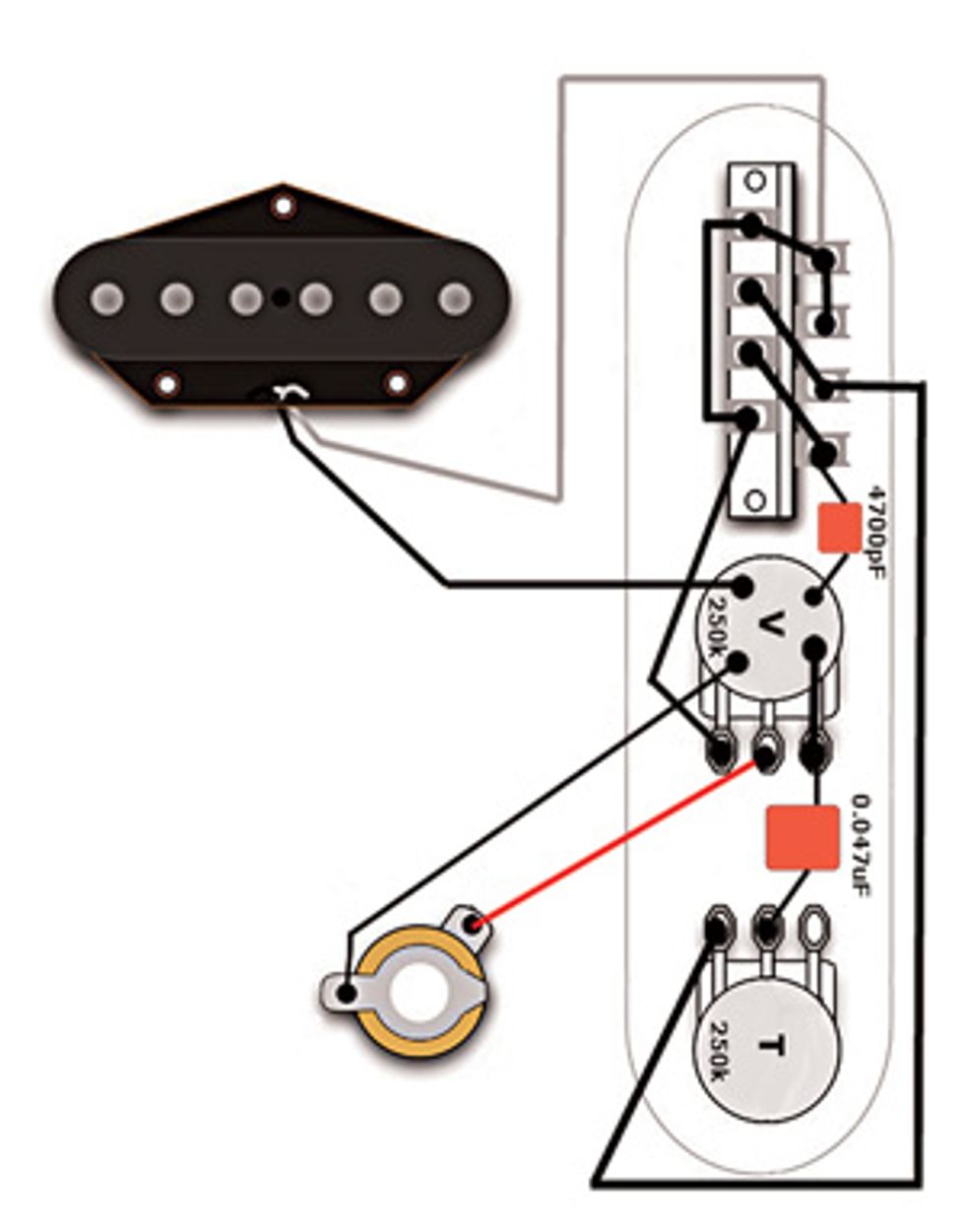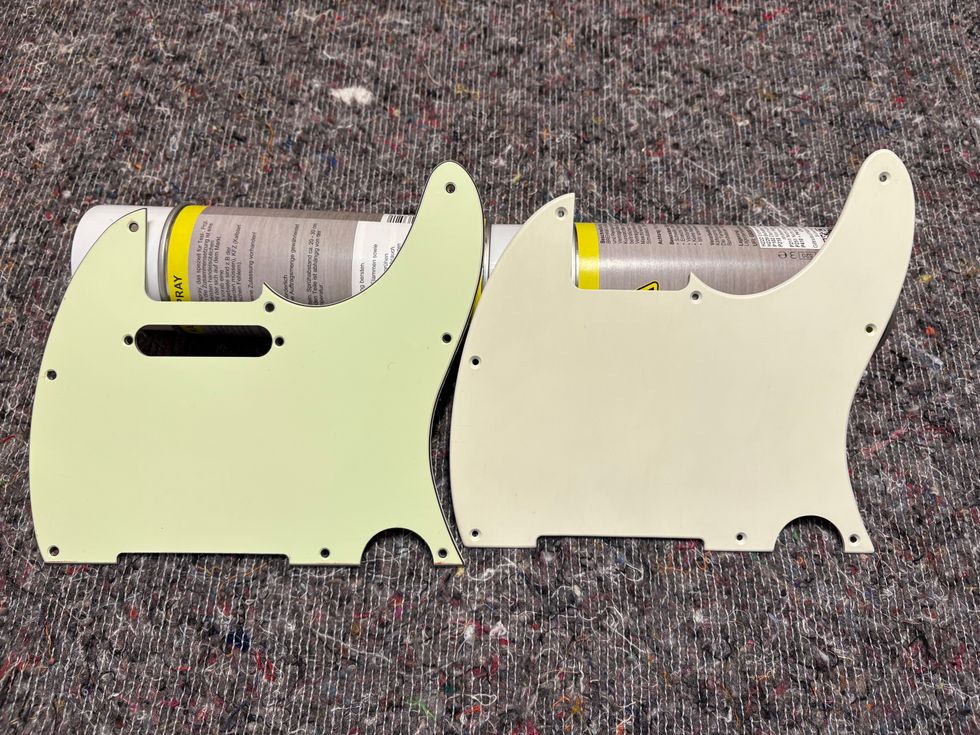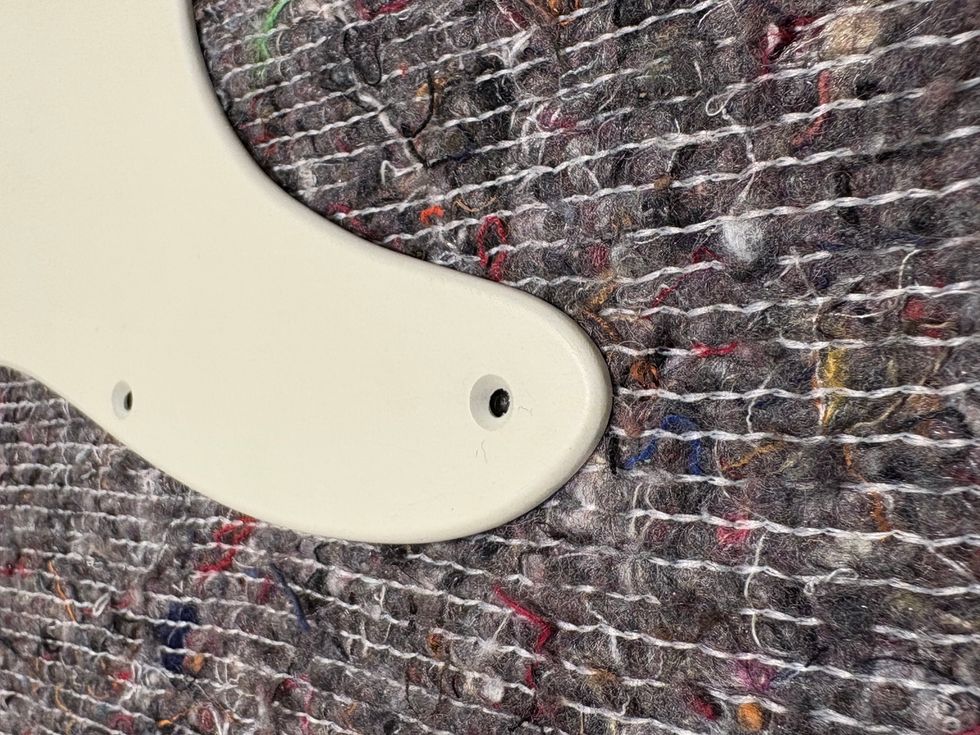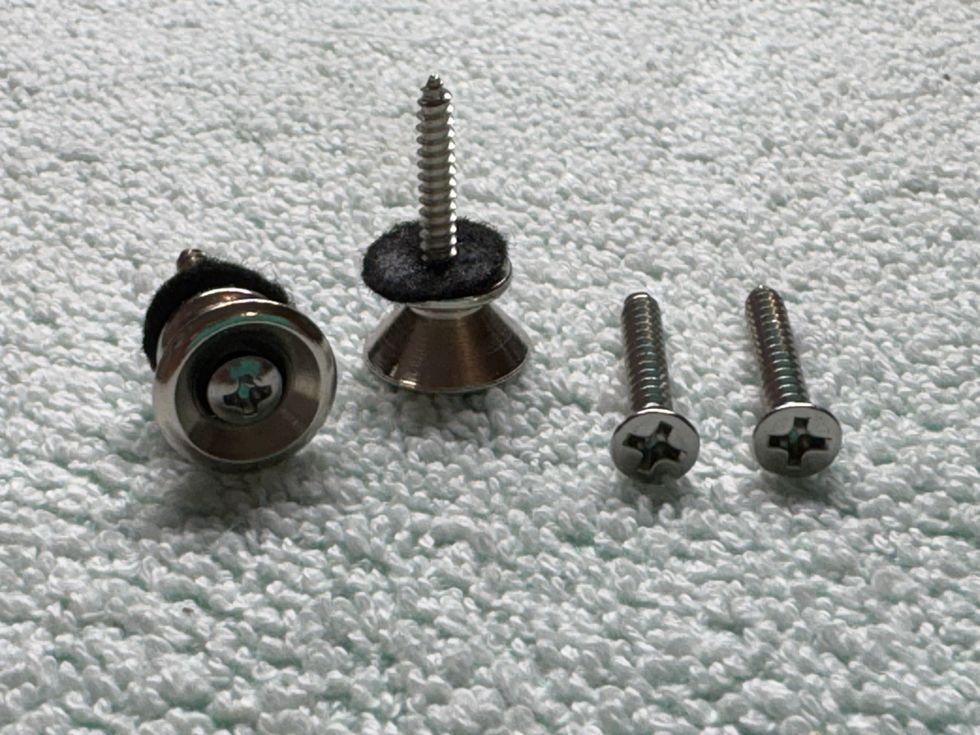
The Eldred Esquire wiring schematic. Illustrationcourtesy of www.singlecoil.com
This month, let's continue exploringEsquire mods by diving into the so-called“Eldred Esquire wiring," which iscurrently one of the most popular wiringschemes for this iconic Fender model. TheEldred wiring is named after Mike Eldred,who directs the Fender Custom Shop. (Thismust be one of the dream jobs in today'sguitar industry!) Mike came up with thiswiring for his personal Esquire and it wasan instant success.
In addition to managing the CustomShop, Mike is also a great guitarist whogigs a lot with his trio, so he knows what aguitarist really needs. I had the pleasure ofmeeting Mike at one of the winter NAMMshows in California, and he's a very nice andfunny guy, too. (Visit fendercustomshop.comand mikeeldredtrio.com for a closer look atMike's work.)
Like so many other Esquire players,Mike doesn't like the stock switching position#3, which routes the guitar's singlepickup through the volume control anda fixed “treble roll-off " capacitor/resistornetwork. Here is the switching matrix ofhis preferred system:
• Switching position #1. This rearposition is the same as on a standardEsquire. The pickup is routed throughthe volume control only, with the tonecontrol bypassed for a hotter, louderlead sound with extra highs.
• Switching position #2. This middleposition is also the same as on a standardEsquire, with the pickup routedthrough the volume and tone controls.It sounds a little warmer thanposition #1.
• Switching position #3. In the frontposition of the Eldred Esquire wiring,the pickup is routed through a single,small capacitor and volume control,with the tone control bypassed onceagain. You might think this is a verysmall and lame modification because itconsists of nothing more than removingthe fixed treble roll-off networkand replacing it with a capacitor. Butit's a very effective mod that's both versatileand useful.
Adding the small capacitor and entirelyremoving the treble roll-off network givesthis switching position a kind of “oh-oh"vocal quality and creates a scooped and hollowmidrange that sounds nice and warm.This specific sound is also called the “cockedwah tone." When playing an Esquire that'swired this way, anyone with a wah pedal willimmediately know why. Using some volumeswells (the volume pot is still engaged inthis switching position), you can completelymimic a wah pedal, once—like the greatGreg Koch or Jim Campilongo—you masterthe playing technique.
To hear how this switching works andsounds, you can watch a video from theFender Custom Shop, where Mike walks youthrough his switching system on a relic'd '50stop-bound Esquire (YouTube search term:LTD Release '50s Top Bound Esquire Relic).
So what do you need to set up thisswitching? Not very much—just an additional4700 pF (0.0047 μF) capacitor andsome wire. That's it. The project basicallyinvolves removing the treble roll-offnetwork, throwing in the new capacitor,and moving some wires. Generally, thiswiring sounds best with two 250k potsand a traditional Esquire/Telecaster bridgepickup. Mike actually prefers a hotterbridge pickup model with a more prominentmidrange. Fig. 1 shows the EldredEsquire wiring schematic.
Even though the Eldred wiring is versatileand sounds great, it's no crime tocustomize it to your personal preference.Here are some ways to experiment withthis wiring:
• Start with the 0.047 μF tonecapfrom the standard Esquire circuit andthen experiment with the value andthe type of the cap. In several earliercolumns, I've discussed the variousoptions in detail.
• Mike prefers a standard film/foil 4700pF cap for switching position #3. Youcan experiment with the value of thiscap to dial in the tone you want. Alower value than 4700 pF will resultin more highs because less treble isbled to ground and vice versa. A goodrange to tinker with is 1000 pF up to6800 pF, but naturally you can useany value you like.
• Another excellent area to experimentwith is the type of cap you choose toreplace the stock treble roll-off network.You can try ceramic, film/foil,paper-in-oil, paper waxed, silver mica,Styroflex, or anything you wouldlike to try. Personally I prefer a 715Por 225P Orange Drop cap for this,because these caps also offer a prominentmidrange scoop that perfectlysupports the vocal “oh" quality of thetone. These caps really fit like a pair ofold shoes with this wiring. But it canalso be interesting to use a completelydifferent cap (and value), making the“oh" sound more like an “uh" or “ah."
I think you know what I mean!In next month's column, I'll share mypersonal custom version of the Eldredwiring and explain how the Esquire I useonstage is configured, so stay tuned. Untilthen, keep on modding!
Dirk Wacker lives in
Germany and is fascinated
by anything related to old
Fender guitars and amps.
He plays country, rockabilly,
and surf music in two
bands, works regularly as a
session musician for a local studio, and writes
for several guitar mags. He's also a hardcore
guitar and amp DIY-er who runs an extensive
website—singlecoil.com—on the subject.











































